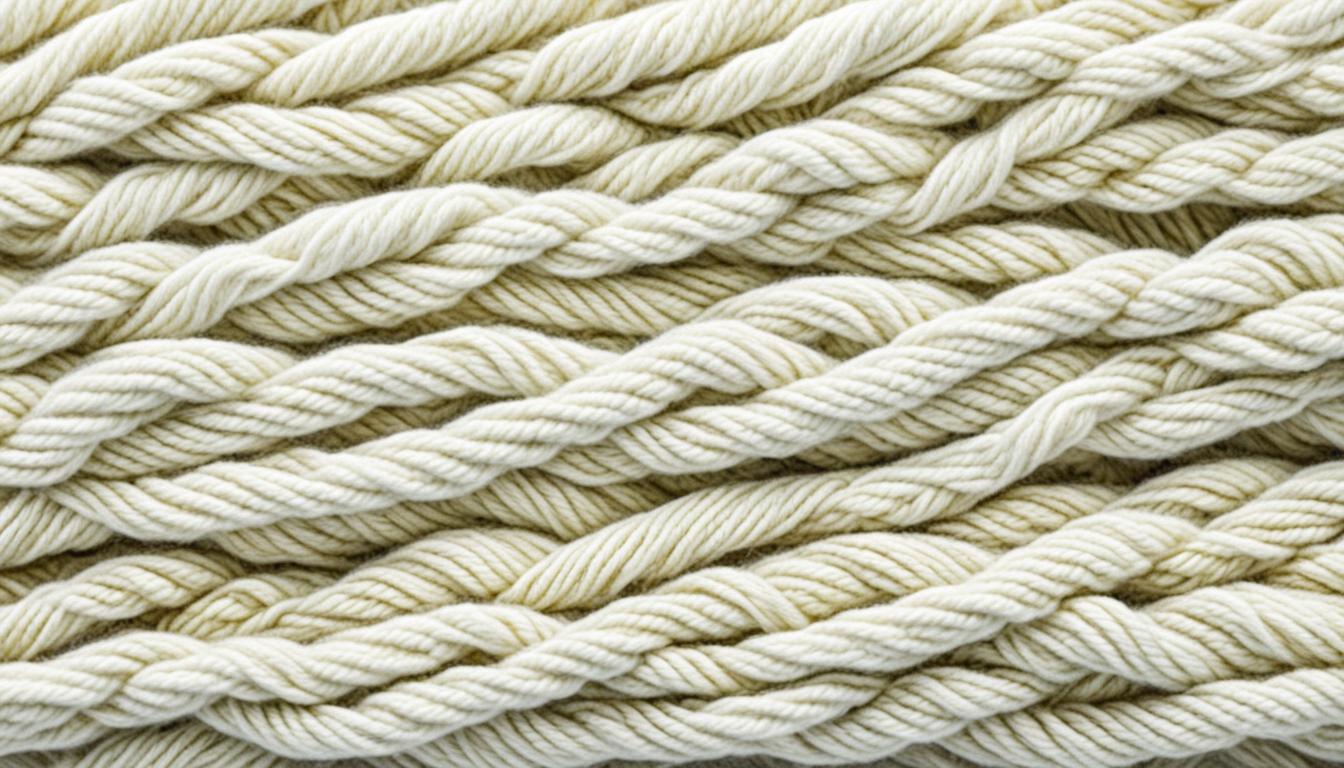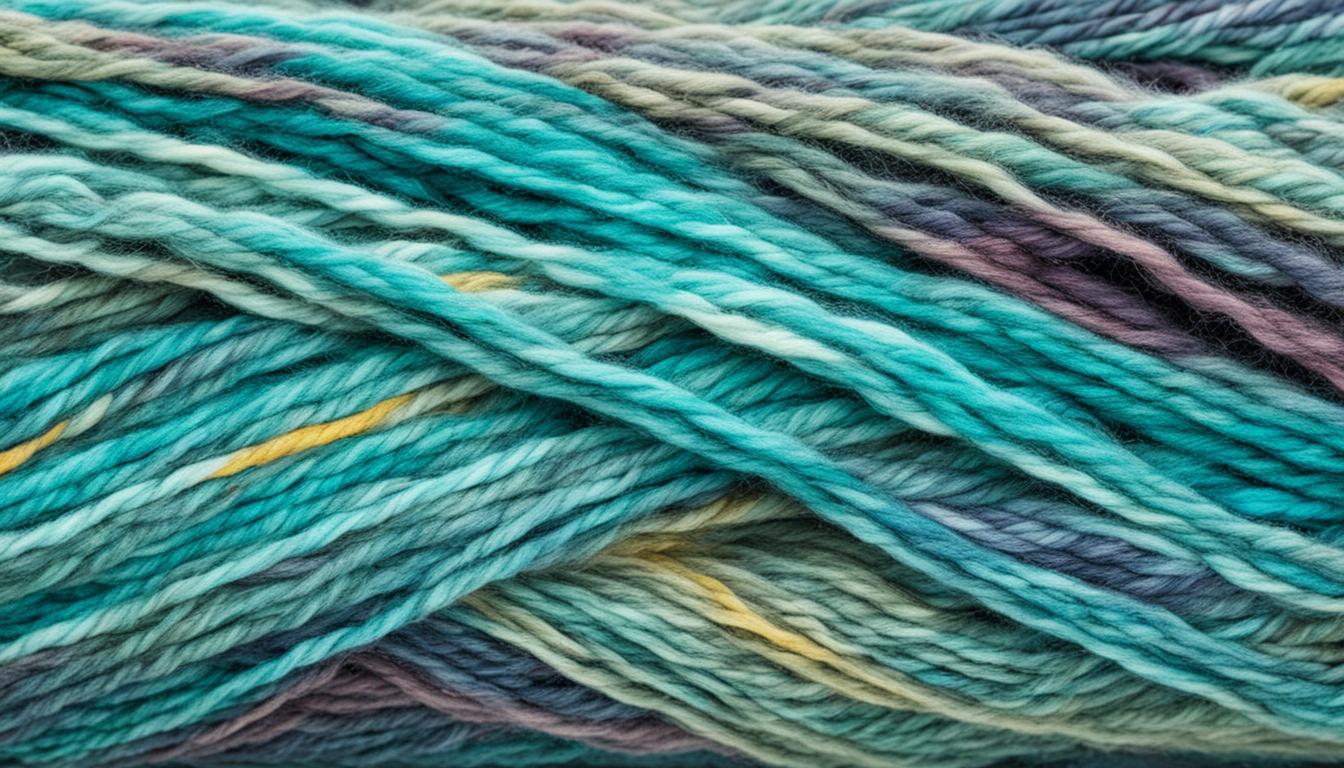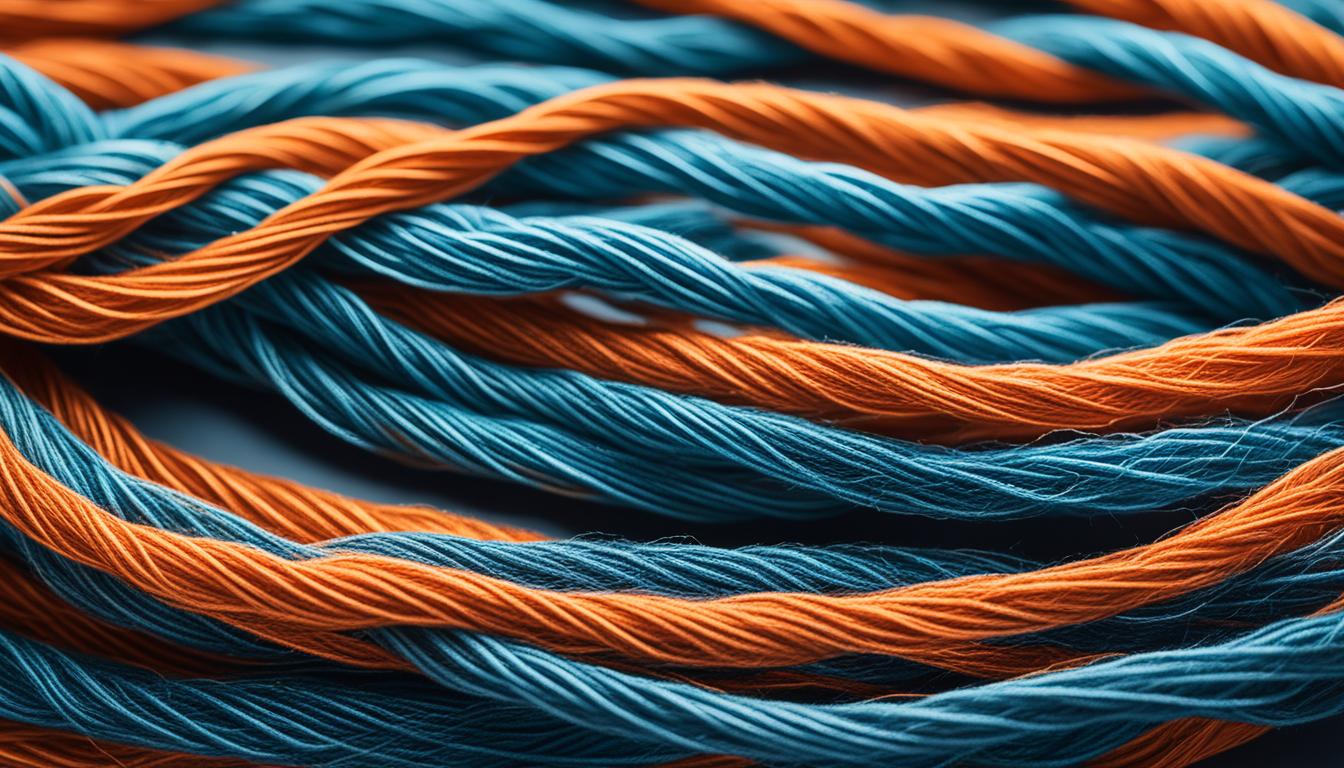When it comes to knitting or crocheting a beanie, figuring out the precise amount of yarn you need is crucial. Taking into account factors like yarn weight, project size, and pattern instructions can assist in ensuring you have everything you need.
But have you ever wondered, how much yarn do you really need for a beanie? Is there a one-size-fits-all answer or does it depend on different factors?
In this article, we’ll delve into the world of beanie yarn requirements and uncover the secrets to calculating the perfect amount of yarn for your next project. So, let’s dive in and unravel the mystery!
Key Takeaways:
- Calculating the right amount of yarn is crucial for knitting or crocheting a beanie.
- Yarn weight, project size, and pattern instructions are factors to consider in determining yarn requirements.
- There are no set rules for yarn quantities, but general estimates can be helpful.
- Other factors like stitch pattern, gauge, and tension can affect yarn coverage.
- Choosing the right yarn material and understanding weight classification are essential.
Yarn Weight and Types for Beanies
When it comes to knitting or crocheting a beanie, the weight and type of yarn you choose play a significant role in determining the amount needed. The yarn weight refers to the thickness of the yarn, which affects the final size and drape of your beanie. Two popular yarn weights for beanies are worsted weight and bulky weight.
Worsted weight yarn is a versatile option that is widely available and suitable for a range of projects. It offers a good balance between warmth and drape, making it a popular choice for everyday beanies. On the other hand, bulky weight yarn is thicker and provides a cozy and chunky texture.
Now, let’s explore some preferred yarn brands for beanies. These brands offer a wide range of colors and have unique qualities that make them perfect for beanie projects:
- Caron Simply Soft: This yarn is known for its luxurious softness and vibrant color selection. It is a medium-weight yarn that creates a smooth and comfortable fabric.
- I Love This Yarn: Affordable and available in a vast array of colors, this yarn is a favorite among many knitters and crocheters. It offers excellent stitch definition and softness.
- Yarn Bee Soft & Sleek Low-Pill: This yarn is known for its durability and anti-pilling properties. It is a medium-weight yarn that creates a soft and beautiful finished product.
- Lion Brand Heartland: Inspired by natural wonders, this yarn line offers a range of nature-inspired shades. It is a medium-weight yarn that provides a warm and cozy feel.
By selecting the right yarn weight and type, you can ensure that your beanie project turns out just the way you envision it. These yarns not only offer quality and versatility but also give you a wide range of options to explore in terms of color and texture.
Now, let’s move on to estimating the quantity of yarn needed for your beanie project in the next section.
Estimating Yarn Quantity for Beanies
When it comes to determining the amount of yarn you’ll need for your beanie project, there are no strict rules. However, having a general estimate can be helpful in planning your yarn purchases. Let’s take a look at some guidelines and factors to consider when estimating the yarn quantity for your beanie.
One chart provided by a trusted source suggests that a beanie made with worsted weight yarn may require approximately 200-325 yards of yarn, depending on the size and style. This can serve as a starting point for your estimation, but it’s important to keep in mind that individual factors can affect the actual yarn requirements.
Yarn estimates can vary based on personal tension, stitch pattern, and any modifications you make to the project. These factors can affect how much yarn is used per stitch or row, meaning your actual yarn consumption may differ from the average. It’s always a good idea to make a small swatch to determine your gauge, as this will give you a more accurate estimate for your specific project.
Factors that can affect yarn quantity:
- Tension: The tighter or looser you crochet or knit, the more or less yarn you’ll use. Be mindful of your tension throughout the project to ensure you’re using an appropriate amount of yarn.
- Stitch Pattern: Different stitch patterns can use varying amounts of yarn. More intricate or textured stitches may require more yarn, while simpler stitches may use less.
- Project Modifications: If you plan to add design elements, such as colorwork or embellishments, they may require additional yarn. Make sure to account for any modifications you make to the pattern when estimating yarn quantity.
Remember that these are just general guidelines, and individual variations can occur. It’s always better to have more yarn than you think you need to avoid running out, especially if your project requires a specific dye lot or limited-edition yarn. It’s also important to check the specific pattern recommendations, as they may provide more accurate estimates based on the design and the designer’s expertise.
With these considerations in mind, you’ll be better equipped to estimate the amount of yarn you’ll need for your beanie project.
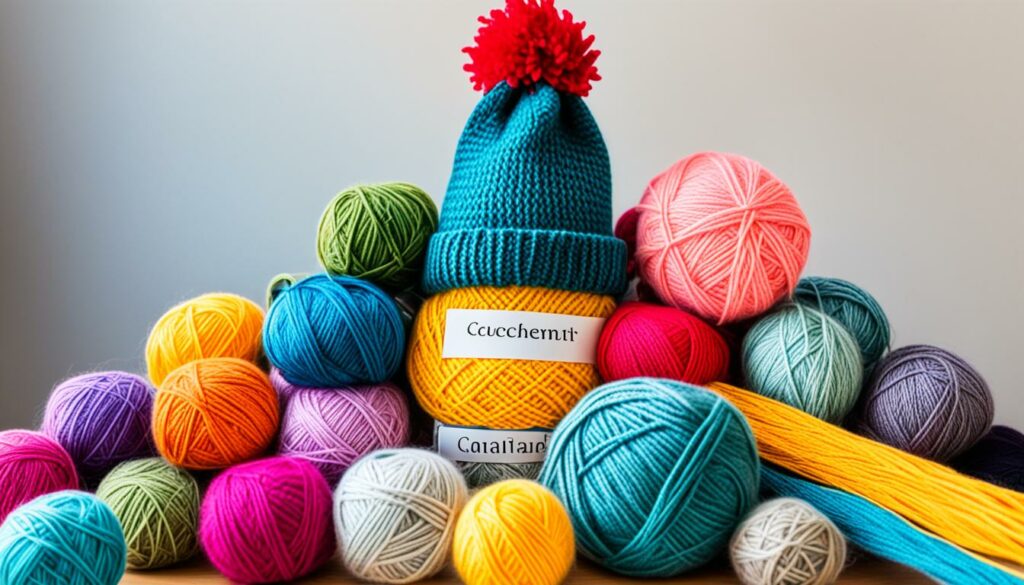
Other Factors to Consider
When it comes to calculating the required yarn quantity for a beanie, there are several additional factors that need to be taken into account. Apart from the yarn weight and the size of the project, other variables can influence the amount of yarn needed. These include the knitting or crochet stitch pattern, gauge, and individual tension.
Each of these factors plays a crucial role in determining the overall yarn coverage for your beanie. For example, certain stitch patterns may require more yarn compared to others due to their intricacy or the number of stitches involved.
“The right gauge is essential to ensure accurate yarn usage. A looser tension generally requires more yarn, while a tighter tension may result in less yarn being needed.” – Knitting Expert
It’s important to note that individual tension can vary from person to person, so it’s always advisable to check your gauge before starting your beanie project. By measuring the number of stitches and rows per inch, you can assess whether your tension aligns with the pattern recommendations.
“The key to achieving accurate yarn usage lies in understanding your own tension. Once you know your personal gauge, you can make informed decisions about the amount of yarn you’ll need for your beanie.” – Knitting Enthusiast
Additionally, it’s wise to factor in a small margin for error or extra yarn when calculating the quantity needed. This accounts for any unexpected changes or modifications to the project, ensuring that you have enough yarn to complete your beanie without running out.
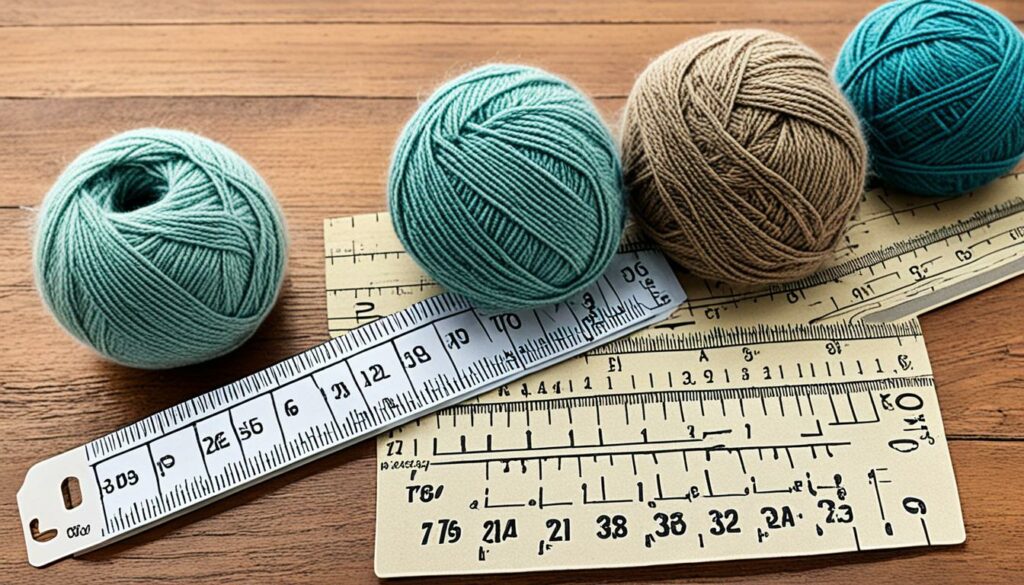
By considering these other factors along with yarn weight and project size, you can more accurately determine the amount of yarn required for your beanie, avoiding any potential setbacks or disappointments along the way.
Understanding Yarn Weight Classification
When it comes to choosing the right yarn for your beanie project, understanding yarn weight classification is crucial. Yarn weight determines the thickness and heaviness of the yarn, which directly affects the overall look, feel, and coverage of your beanie. By matching the recommended yarn weight for your desired project, you can ensure that your beanie turns out as intended.
Yarn Weight Chart
Yarn weight categories range from 1 (super fine) to 7 (jumbo). Here is a breakdown of the different yarn weights:
| Yarn Weight | Description |
|---|---|
| 1 – Super Fine | A delicate yarn perfect for lightweight and lacy designs. |
| 2 – Fine | An ideal weight for delicate accessories and lightweight garments. |
| 3 – Light | A versatile weight suitable for a variety of projects, including garments and accessories. |
| 4 – Medium | The most common yarn weight used for a wide range of projects, including hats, scarves, and sweaters. |
| 5 – Bulky | A thicker yarn that creates warm and cozy pieces, perfect for cold weather accessories. |
| 6 – Super Bulky | An extra thick yarn that works up quickly, great for chunky scarves and blankets. |
| 7 – Jumbo | An extremely thick yarn that creates bold and statement pieces. |
When selecting the yarn weight for your beanie, consider the style and intended use of your project. If you’re aiming for a lightweight and breathable beanie, a yarn in the super fine or fine category would be suitable. On the other hand, if you’re looking to create a warm and cozy beanie, opting for a bulky or super bulky yarn would be a better choice. By matching the yarn weight to your desired outcome, you can achieve the perfect balance of comfort and style.
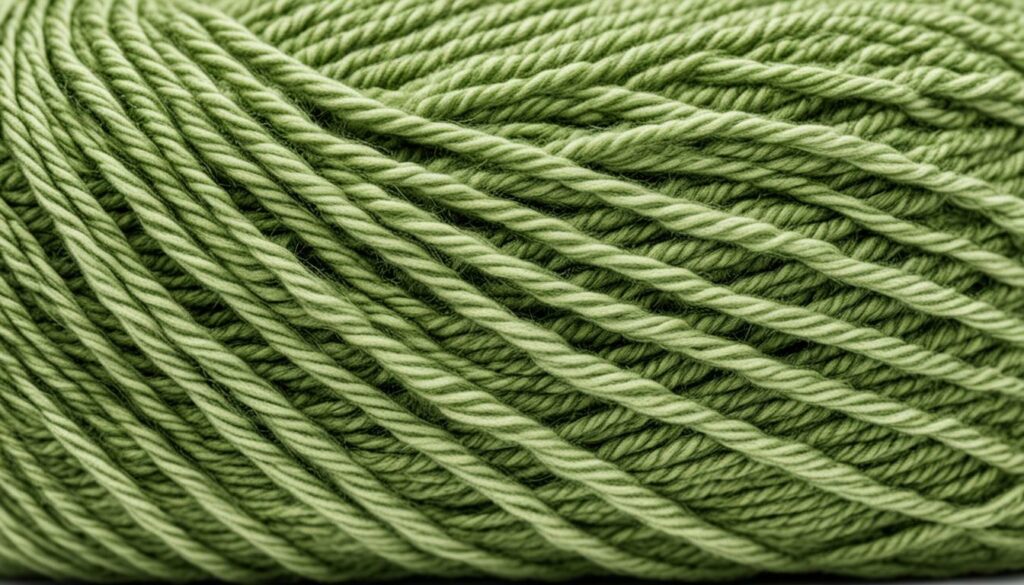
Tips for Choosing Yarn for Beanies
When it comes to creating a cozy and stylish beanie, selecting the right yarn is key. Consider aspects such as fiber content, elasticity, durability, and color choices to ensure your beanie turns out just the way you envisioned.
Firstly, the fiber content of the yarn plays a significant role in the overall look and feel of your beanie. Popular options include cotton, wool, acrylic, alpaca, and blends. Cotton provides breathability, while wool offers warmth. Acrylic is known for its affordability and durability. Alpaca adds a luxurious touch, and blends can combine desirable qualities. Keep in mind the climate, intended use, and personal preferences when choosing the yarn material.
Secondly, consider the elasticity of the yarn. Elasticity contributes to the beanie’s fit and shape retention. High elasticity yarns, such as wool or acrylic blends, are ideal for snug-fitting beanies that will keep their form even after multiple wearings. On the other hand, less elastic yarns can result in a looser, slouchy beanie.
Durability is another important factor to consider. Depending on the frequency of use and your maintenance routine, you’ll want a yarn that can withstand regular wear and washing. Take into account the washing instructions of the yarn—some may require delicate handling, while others can handle machine washing.
Lastly, the color choices can play a significant role in the overall aesthetic of your beanie. Consider the recipient’s preferences, the intended style of the beanie, and how the colors will complement the person wearing it. Bright and bold colors can add a playful touch, while neutral and earthy tones offer a more classic and versatile look.
| Yarn Characteristics | Suggested Yarn Types |
|---|---|
| Warmth | Wool, Alpaca |
| Breathability | Cotton |
| Affordability | Acrylic |
| Durability | Acrylic, Blends |
| Texture Variety | Blends |
Expert Tip:
Consider creating a small test swatch before committing to a particular yarn for your beanie. This allows you to evaluate its texture, drape, and stitch definition, ensuring it aligns with your intended design.
Remember to factor in your beanie yarn measurements when choosing your yarn to ensure you have enough for your project. By carefully considering these tips and embracing your creativity, you’ll be well-equipped to select the perfect yarn for your beanie project.
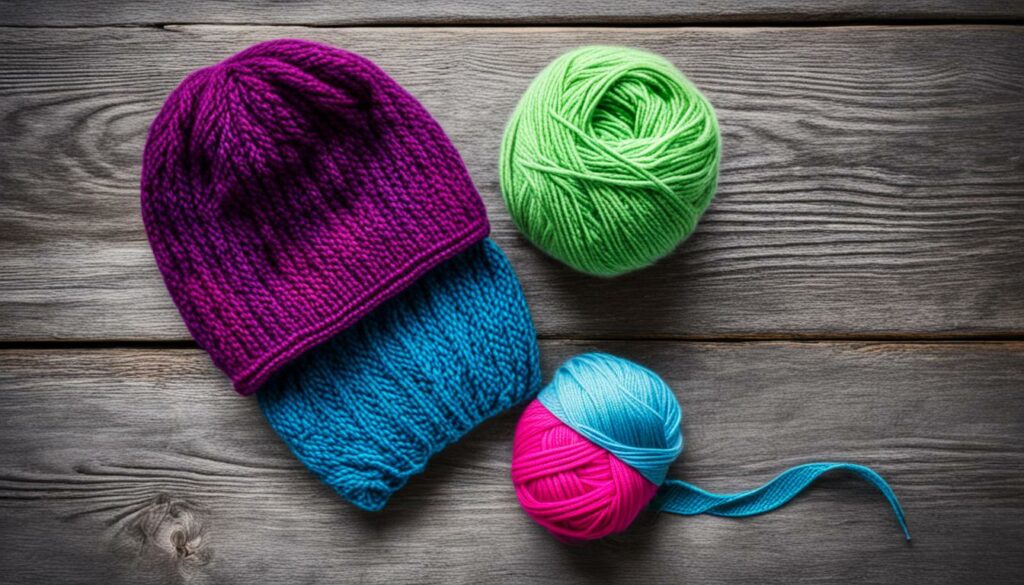
Checking Pattern Recommendations
When it comes to determining the ideal amount of yarn for your beanie, pattern recommendations are invaluable. Well-written patterns often provide specific instructions on the recommended yarn type, weight, and quantity needed for each size. Following these recommendations can serve as a dependable starting point for your project.
Pattern recommendations offer valuable insights into yarn estimates for beanies, helping you make informed decisions about the required yarn measurement.
Designers base their recommendations on their expertise and the intended design of the beanie. By following these guidelines, you can ensure a successful outcome for your project.
Take the time to review the recommended yarn type, as different yarns may have slightly different coverage. The weight of the yarn is an essential factor to consider as well, as it directly impacts the yardage needed for your beanie.
Dan’s Beanie Pattern Recommendation:
For example, let’s consider Dan’s Beanie Pattern, a popular and well-regarded design within the knitting community. This pattern recommends using a worsted weight yarn and estimates a yarn requirement of 250-300 yards for an adult-sized beanie.
Keep in mind that yarn estimates may vary slightly depending on factors such as your individual tension and any modifications made to the pattern. If you intend to deviate from the recommended yarn, it’s essential to recalculate the yarn quantity based on the new specifications.
| Pattern | Yarn Weight | Yarn Quantity (Adult Size) |
|---|---|---|
| Dan’s Beanie Pattern | Worsted weight | 250-300 yards |
| Sam’s Slouchy Hat Pattern | Bulky weight | 150-200 yards |
| Emily’s Cable Knit Beanie Pattern | Aran weight | 200-250 yards |
Referencing pattern recommendations ensures that you have a reliable estimate of the yarn quantity needed for your beanie project. It allows you to plan accordingly and avoid running out of yarn mid-project, reducing the risk of frustration and disappointment.
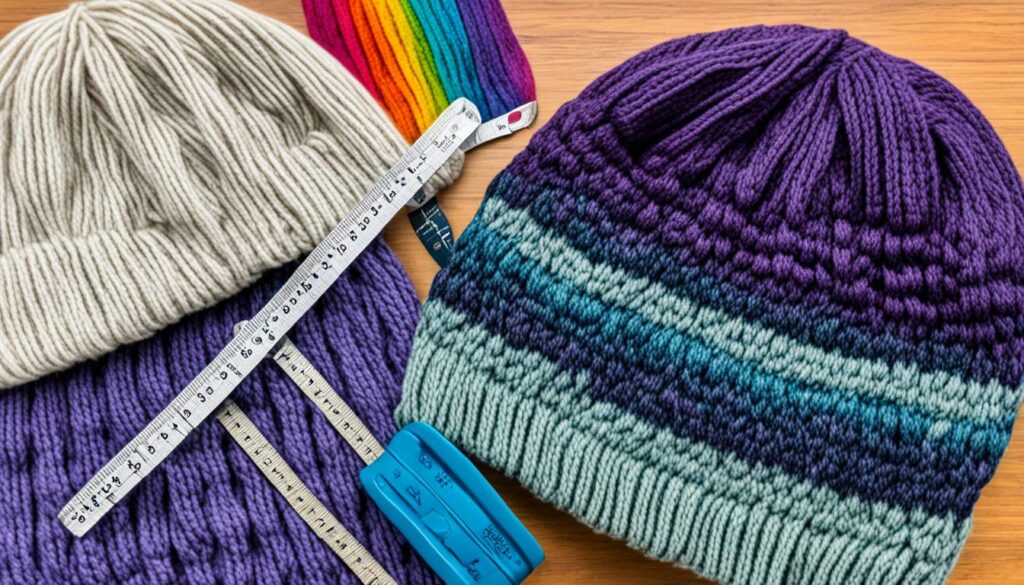
Importance of Extra Yarn
When it comes to knitting or crocheting a beanie, it’s always important to have some extra yarn on hand. This is especially true if you’re working on a larger project like a beanie. Having additional yarn ensures that you won’t run out before completing your project, particularly when using unique or limited-edition yarns.
So, why is it recommended to buy an extra skein or calculate your yarn needs with some margin for error? Well, there are a few reasons. First, different people have different tension when working with yarn. This means that even if two people are following the same instructions, their finished products may require different amounts of yarn. Additionally, unexpected changes or modifications to the project may also require more yarn than initially estimated. By having extra yarn, you can avoid the frustration of running out and not being able to find a matching dye lot or color.
Another reason to have extra yarn is the possibility of making mistakes. We all make the occasional mistake while knitting or crocheting, and sometimes fixing those mistakes requires unraveling a few rows or even starting over from scratch. Having extra yarn ensures that you’ll have enough to complete your project even if you need to undo some work. It’s always better to be safe than sorry!
In an industry where creativity is encouraged, having additional yarn not only provides peace of mind but also allows for improvisation and customization. With that extra yarn, you can add a unique touch to your beanie, whether it’s a contrasting color ribbing or an unexpected pattern element. So go ahead and embrace the possibilities that extra yarn brings!
To summarize, having extra yarn for your beanie project is essential for various reasons. It allows for variations in tension, accounts for unexpected changes or modifications, enables the correction of mistakes, and provides the flexibility to customize your project. Whether you choose to buy an extra skein or calculate your yarn needs with some margin for error, having that additional yarn on hand ensures a smoother and more enjoyable knitting or crocheting experience.
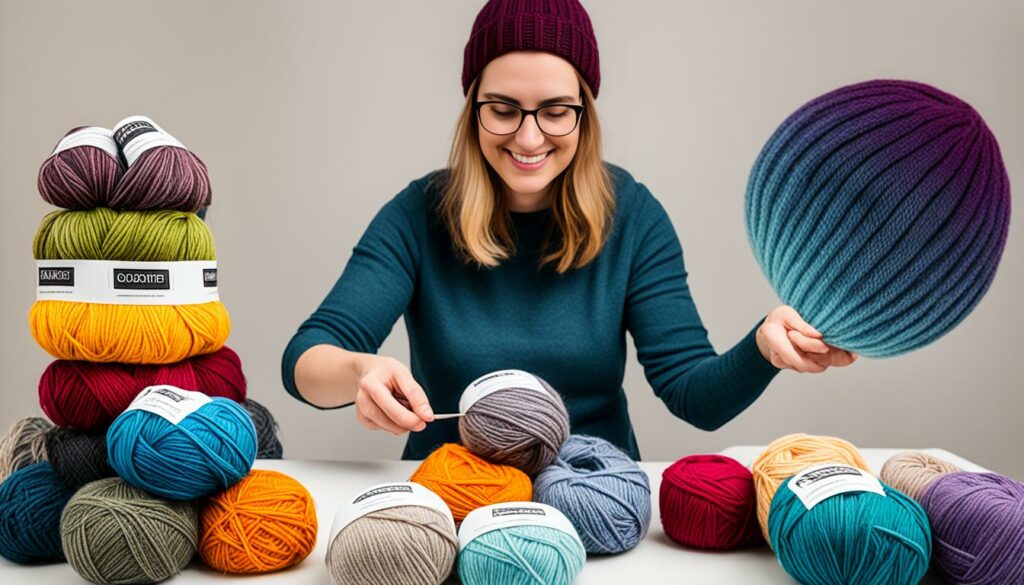
| Reasons to Have Extra Yarn |
|---|
| Accounts for variations in tension |
| Allows for unexpected changes or modifications |
| Enables correction of mistakes |
| Provides flexibility for customization |
Consideration for Yarn Material
When it comes to knitting or crocheting a beanie, the choice of yarn material can greatly influence the overall outcome. Different materials offer unique properties like warmth, breathability, and texture, making it important to consider various factors when selecting yarn for your project.
First and foremost, think about the climate in which the beanie will be worn. For colder temperatures, wool or alpaca yarns provide excellent insulation and keep you cozy during chilly winter days. On the other hand, if you’re crafting a beanie for milder weather, cotton or acrylic yarn can offer breathability and lightweight comfort.
Next, consider the intended use of your beanie. If you’re making it for outdoor activities like skiing or hiking, opting for a yarn that is durable and resistant to wear will ensure your beanie lasts for seasons to come. Alternatively, for a more fashion-forward beanie, yarns with unique textures or blends can add visual interest and make a statement.
Of course, personal preferences also play a significant role in yarn selection. Experiment with different yarn materials to discover the ones you enjoy working with the most and find appealing in the final product. Don’t be afraid to explore endless possibilities, as each material can bring its own charm to the beanie.
Popular yarn material options for beanies include:
- Cotton: Breathable, comfortable, and great for warmer weather.
- Wool: Provides excellent warmth and insulation, making it ideal for cold climates.
- Acrylic: Versatile, durable, and available in a wide range of colors.
- Alpaca: Luxuriously soft and lightweight, perfect for cozy beanie projects.
- Blends: Yarns that combine multiple fibers, offering a mix of desirable characteristics.
The choice of yarn material can make a significant difference in the comfort, durability, and aesthetic appeal of your beanie. By considering the climate, intended use, and personal preferences, you can find the perfect yarn that meets all your requirements.
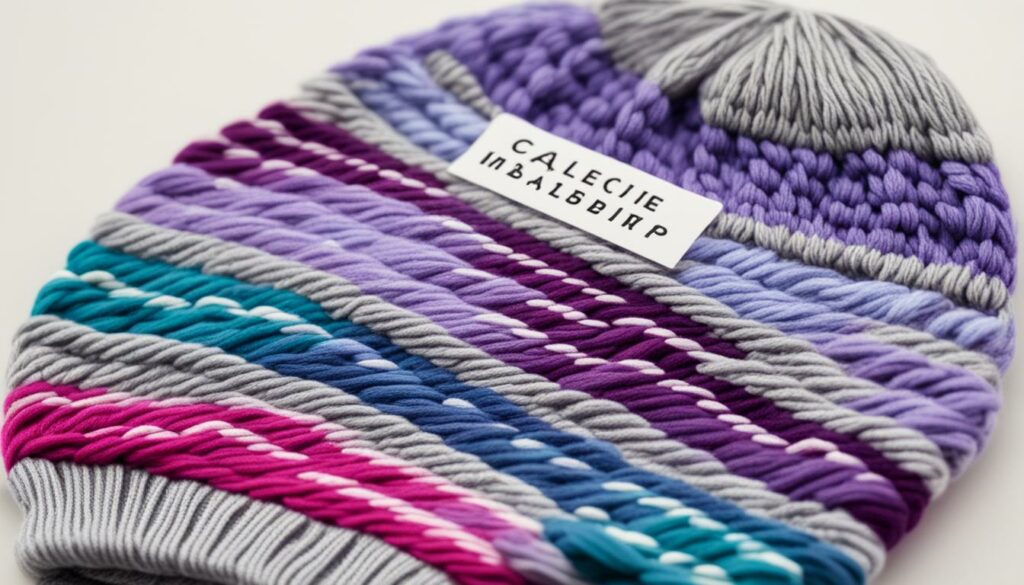
| Yarn Material | Properties |
|---|---|
| Cotton | Breathable, comfortable, great for warmer weather |
| Wool | Excellent warmth, insulation for colder climates |
| Acrylic | Versatile, durable, available in various colors |
| Alpaca | Luxuriously soft, lightweight |
| Blends | Combines desirable characteristics of different fibers |
Assessing Yarn Quantity for Customization
If you’re planning to put your personal touch on a beanie pattern and customize it to your liking, it’s crucial to assess the yarn quantity carefully. Modifying the stitch pattern, size, or design elements can have a significant impact on the amount of yarn needed. To ensure you have enough yarn to complete your customized beanie, we recommend consulting the pattern instructions or using a reliable yarn calculator tool.
Customization allows you to create a beanie that perfectly suits your style and preferences. Whether you’re adding your favorite stitches, adjusting the size for a better fit, or incorporating unique design elements, it’s important to account for these changes when estimating yarn requirements. By carefully assessing the modifications you plan to make, you can calculate the necessary yarn quantity and avoid running out mid-project.
Consulting the pattern instructions is a helpful starting point. Pattern designers often provide valuable insights into yarn type, weight, and quantity needed for various sizes. While these recommendations offer an excellent baseline, keep in mind that your modifications may influence the overall yarn coverage. Implementing different stitch patterns or altering the size can result in variations that impact yarn consumption.
Additionally, utilizing a yarn calculator tool can offer further assistance in assessing the yarn quantity for customization. These tools take into account the specific modifications you plan to make, allowing for a more accurate estimation of the yarn needed. By inputting details such as stitch pattern changes, size adjustments, and design elements, you can obtain a tailored calculation that helps you purchase the correct yarn quantity.
Ensuring that you have an adequate supply of yarn is crucial for a smooth and enjoyable customization process. Running out of yarn mid-project can be frustrating and may result in inconsistencies in the finished beanie. By taking the time to assess the yarn quantity needed and considering your modifications, you can have peace of mind knowing that you have the right amount of yarn to bring your customized beanie to life.

Example Customization Yarn Quantity Calculation:
| Modification | Estimated Yarn Adjustment |
|---|---|
| Change in stitch pattern | +10% |
| Size adjustment (larger) | +15% |
| Additional design elements | +5% |
| Total Yarn Adjustment | +30% |
This example showcases how modifications can impact yarn quantity. By adding 10% for changes in stitch pattern, 15% for a larger size, and 5% for additional design elements, the total yarn adjustment is 30%. This means you would need to purchase 30% more yarn compared to the original pattern recommendations to accommodate your customized beanie.
Conclusion
Determining the right amount of yarn for a beanie can be a combination of pattern recommendations, personal preferences, and project considerations. While there are guidelines and estimated quantities available, it’s important to be flexible and allow for variations in tension and modifications. By considering yarn weight, project size, and other factors, you can confidently calculate the yarn required for your desired beanie. Happy crafting!
